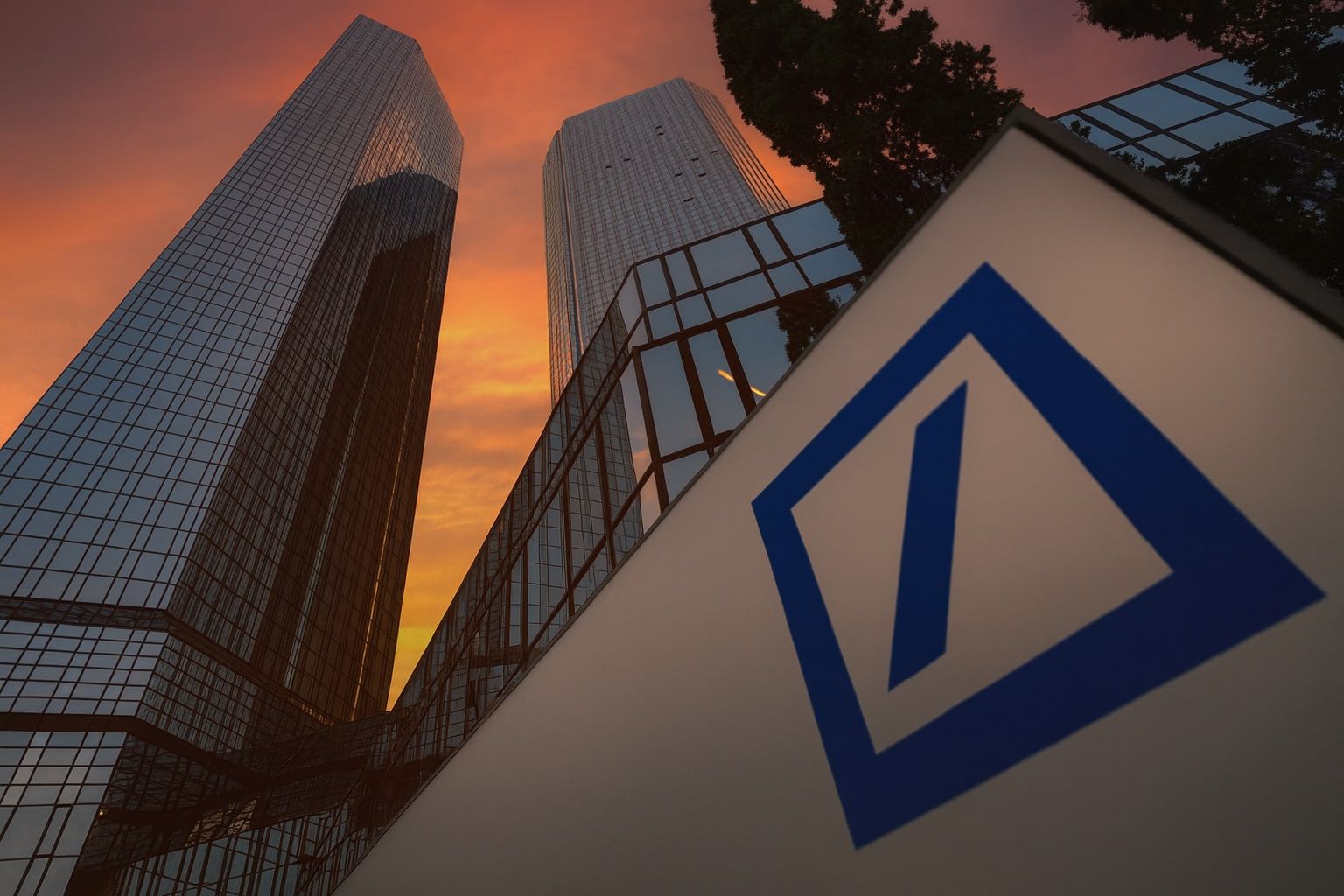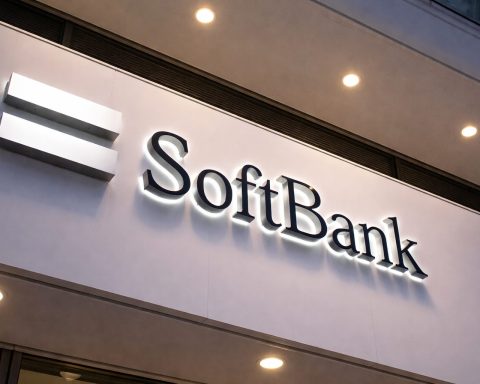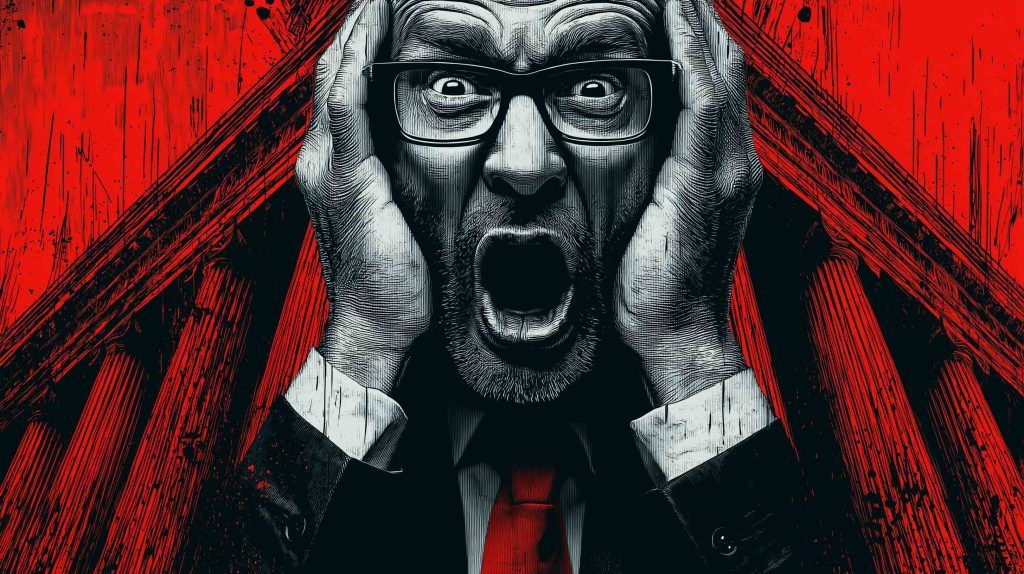- Shares Dive on Market Turmoil: Deutsche Bank’s stock price tumbled around 6% on Friday, October 17, underperforming the broader market. The shares fell from about €30.50 to €28.60 [1], putting Deutsche Bank among the worst DAX performers while the index itself slid roughly 2% [2] amid a global sell-off.
- U.S. Credit Fears Trigger Sell-Off: Investors were spooked by fresh signs of credit stress at U.S. regional banks. Two mid-sized lenders (Zions Bancorp and Western Alliance) revealed surprise loan losses and alleged fraud, reviving comparisons to the 2023 banking turmoil and sparking a ripple effect across Asia and Europe [3] [4]. “What we see in the banks selling off overnight in the U.S., Asia wakes up to it, Europe wakes up to it, and so it spreads,” observed James Rossiter of TD Securities [5]. European bank stocks sank ~3%, with Deutsche Bank and Barclays down over 5% in sympathy [6].
- Safe Havens Surge: The risk-off mood has driven a flight to safety. Gold prices hit a record high above $4,378/oz – up ~8% for the week, the biggest weekly jump since 2008 [7] – as jittery investors sought havens. Government bond yields plunged to multi-month lows on expectations that central banks may step in to stabilize the economy [8].
- From Rally to Retreat: The slide comes just weeks after Deutsche Bank stock reached a 52-week high of €32.21 in mid-September [9]. Even after the recent pullback, shares remain far above last year’s lows (~€15.23 in Oct 2024 [10]), reflecting how strongly the stock had rallied on improved earnings. The bank notched its best quarterly profit in over a decade in Q1 2025 (pre-tax €2.84 billion, +39% YoY) [11], benefiting from higher interest rates, cost cuts, and a rebounding economy. That strength fueled a nearly 90% surge in the share price over the past year and allowed Deutsche Bank to launch major shareholder payouts (including €1 billion in buybacks and a 50% dividend hike) [12] [13].
- Outlook Divides Experts: Analysts remain cautiously optimistic on fundamentals but wary of broader risks. The consensus 12-month price target for Deutsche Bank is around €31.5, implying modest upside from current levels [14]. Earnings are expected to continue rebounding – about €2.91 per share in 2025 [15] – supporting a higher dividend of €1.00 (vs €0.68 last year) [16]. “The bull market remains intact,” argue some strategists, calling the dip a potential buying opportunity if no new shocks emerge [17]. However, others warn that the recent bank scares could be the “cockroaches” presaging deeper issues: “When you see one cockroach, there are probably more,” JPMorgan CEO Jamie Dimon cautioned this week [18]. One analyst noted that “poor performing credit at one bank can drag down the group quite fast,” underscoring how fragile sentiment is across the sector [19].
Market Shock Hits Deutsche Bank
A fresh wave of fear swept through global markets in recent days, and Deutsche Bank’s stock was not spared. On Friday (Oct. 17), shares of Germany’s largest lender plunged over 6%, falling to roughly €28.6 [20]. By midday, Deutsche Bank was deep in the red – occupying the bottom tier of the DAX index – as the overall DAX slumped about 2% [21]. This sharp drop erased roughly €1.9 from the share price in one day. It marked the latest setback for the bank’s stock, which had been climbing steadily for months before abruptly reversing course this week.
What sparked the sudden sell-off? In a classic case of contagion, the trigger came from across the Atlantic. Late Wednesday and Thursday, two U.S. regional banks made unsettling disclosures that shook investor confidence in credit markets. Zions Bancorporation, a Utah-based lender, revealed it will take a $50 million loss on two large business loans after uncovering borrower fraud, effectively writing off the exposure. Around the same time, Western Alliance Bancorp, an Arizona bank, said it had filed a lawsuit over a bad loan (approximately $100 million) tied to alleged fraud [22]. While these issues were ostensibly isolated to mid-sized U.S. banks, they hit a nerve. “While this was an ostensibly isolated story at two banks each with less than a $10bn market cap, the event drew inevitable comparisons to the regional bank stress [after] the collapse of Silicon Valley Bank in 2023,” observed Jim Reid, a Deutsche Bank strategist [23]. In other words, investors immediately flashed back to last year’s banking turmoil – when the failure of SVB and others sent shockwaves through global markets – and began bracing for potential credit problems lurking in the financial system.
Once again, fear spread faster than facts. U.S. regional bank stocks plunged on Thursday, wiping out over $100 billion in market value in a single day [24]. Zions shares nose-dived ~13%, Western Alliance fell ~11%, and even unrelated financial firms were caught in the downdraft – for example, Jefferies Financial Group sank nearly 10% on “what’s next?” anxiety about its exposure to a bankrupt auto lender [25] [26]. By Friday morning, the “risk-off” mood had leapt across oceans: Japan’s Nikkei fell 1.6% and Hong Kong’s Hang Seng dropped 2% [27]. Europe woke up to the turmoil and promptly sold off as well. Major indices opened sharply lower – London’s FTSE 100 slid ~1.5% and Germany’s DAX tumbled about 2% in early trading [28]. Bank stocks led the decline. The STOXX Europe 600 Banks index dove roughly 2.7%, and big European lenders like Deutsche Bank and Barclays saw their shares sink over 5% during the day [29].
Market strategists described it as a chain reaction of bad news feeding fear. “What we see in the banks selling off overnight in the U.S., Asia wakes up to it, Europe wakes up to it, and so it spreads,” explained James Rossiter, head of global macro strategy at TD Securities [30]. Even banks with no direct links to the U.S. issues were dragged down by contagion psychology. Stephen Biggar, a banking analyst at Argus Research, noted that the episode highlights how “you can’t take credit quality for granted, and poor performing credit at one bank can drag down the group quite fast.” [31] In Germany, Deutsche Bank’s hefty slide exemplified this phenomenon – there were no specific negative headlines about Deutsche Bank itself on Friday, but the generalized credit jitters sent its stock swooning.
The broader backdrop also amplified the sell-off. Investor sentiment was already on edge earlier in the week due to geopolitics and central bank concerns. In fact, just days prior, the DAX had hit a record high (24,771 points on Oct. 13) only to drop ~1% on Oct. 14 after a flare-up in trade tensions [32]. Former U.S. president Donald Trump had threatened 100% tariffs on Chinese goods, reigniting fears of a U.S.–China trade war and putting markets in “risk-off” mode [33]. That pullback foreshadowed the fragility of the rally. “Investors forfeit gains at the first sign of trouble,” remarked one strategist, noting how quickly the mood shifted once uncertainty returned [34]. By the time the U.S. regional bank scare hit, markets were primed to react badly – a proverbial spark in a room full of gas.
Safe-haven assets surged as the equity rout intensified. Gold prices rocketed to all-time highs, breaking above $4,378 per ounce on Friday [35]. The yellow metal’s value has jumped about 7–8% this week, marking its strongest weekly gain since the 2008 financial crisis [36]. “It wouldn’t surprise me if gold hits $5,000 before it stops for air… equally, it could fall 20% next month,” quipped Eren Osman, investment director at Arbuthnot Latham, capturing the mix of exuberance and uncertainty driving bullion to extremes [37]. Government bonds also rallied (yields plunged to multi-month lows) as traders wagered that central banks, including the U.S. Federal Reserve, might even cut rates sooner-than-planned to calm financial conditions [38]. In short, global markets have quickly swung to a “risk-off” stance, and economically sensitive stocks like banks have borne the brunt of the sell-off.
From Boom to Pullback: Deutsche Bank’s Rollercoaster Year
For Deutsche Bank shareholders, the abrupt drop is a jarring reversal from what had been a remarkable rally. Over the past year, the German banking giant’s stock price had nearly doubled, reflecting a dramatic turnaround in the company’s fortunes. In late 2022, Deutsche Bank was still trading in the single digits – at one point in October 2022 the stock hit a low around €7.25 amid recession fears [39]. Fast forward to September 2025, and the share price was flirting with multi-year highs above €30. On September 15, 2025, Deutsche Bank shares topped out at €32.21, a 52-week high [40] and the highest level seen in over a decade. Even after this week’s slide back into the €28 range, the stock remains over 80% higher than its 52-week low of €15.23 from last fall [41] – a testament to how far the bank’s recovery had come before recent tremors.
What fueled such a steep climb? In large part, strong financial results and rising investor confidence. After years of restructuring and struggle, Deutsche Bank began 2025 on a stellar note. In the first quarter, the bank delivered its highest quarterly profit in more than ten years [42]. Pre-tax earnings jumped 39% year-on-year to €2.84 billion, as revenues rose 10% (to €8.5 billion) and costs fell significantly, yielding a much improved 61% cost-income ratio [43]. Net profit attributable to shareholders came in at €1.78 billion for Q1, also up 39% – an outcome CEO Christian Sewing hailed as clear evidence that the bank’s strategy was on track [44]. “Thanks to revenue growth and strict cost management we are on course to meet our annual targets,” Sewing said at the time [45]. This impressive start to the year gave the stock a powerful tailwind.
Deutsche Bank has been a prime beneficiary of the higher interest rate environment in Europe. After a decade of ultra-low or negative interest rates that squeezed bank margins, the European Central Bank’s tightening cycle (which began in 2022) dramatically improved the earnings outlook for lenders. Deutsche Bank, with its large deposit base and trading operations, saw interest income and trading revenues climb as rates rose. At the same time, management’s multi-year restructuring – which included shedding riskier assets, exiting less profitable businesses, and refocusing on core strengths – finally seemed to be paying off. By 2025 the bank was hitting many of its profitability and efficiency targets, and investors took notice.
The share’s surge was further propelled by shareholder-friendly capital actions. In 2023–2024, Deutsche Bank reinstated dividends and signaled it would return excess capital to shareholders. This year, it delivered. The bank completed a €750 million share buyback program by mid-September and immediately launched a further €250 million buyback slated to run through November [46] [47]. Combined with its dividend payout (which was raised to €0.68 per share for 2024, and is expected to rise to ~€1.00 for 2025 [48]), Deutsche Bank is on track to return roughly €2.3 billion to shareholders in 2025, about 50% more than in the prior year [49]. Such moves telegraph management’s confidence in the bank’s financial health and future earnings. “The bank likely will exceed its goal of €8 billion in total capital distributions for 2021–2025,” Deutsche Bank proclaimed last month [50] – a target once thought ambitious, now within reach. These upbeat signals helped lift the stock, as investors rewarded the combination of growing profits and generous payouts.
By mid-September, Deutsche Bank’s valuation had recovered so much that some analysts began to wonder if the stock had overshot in the short term. After all, at €32 the share price had risen roughly +90% from a year earlier [51] and more than 4x from its 2020 pandemic lows. Some technical indicators flashed warning signs of an overextended rally. Indeed, in the weeks following the September peak, the stock traded sideways to slightly lower, struggling to break new highs. Market observers pointed out that after such a steep climb, even a whiff of bad news could spur a pullback – which is exactly what happened in October. The global credit jitters provided the spark to knock the stock off its highs.
As of Friday’s close around €28–29, Deutsche Bank’s market capitalization stands near €59 billion [52]. This places it around 9th in size on the DAX index, with roughly a 2.7% weighting [53]. For context, the stock still trades about 11% below its 52-week high and ~49% above its 52-week low, underlining the volatility shareholders have experienced [54] [55]. Long-term investors who bought during the bank’s troubled years (when shares languished under €10) have seen strong gains, but newer investors who chased the recent rally at €30+ have quickly been reminded that bank stocks can be very sensitive to shifts in sentiment.
Importantly, despite the recent dip, Deutsche Bank’s underlying fundamentals have not materially deteriorated. The bank’s second-quarter results (reported in late July) showed mixed trends – a solid profit and improved credit quality, but a year-over-year revenue dip due in part to quieter trading activity [56]. Still, Deutsche Bank remained comfortably profitable in Q2 2025, with €0.49 earnings per share, a big swing from a €0.28 loss per share in the same quarter of 2024 [57]. Loan loss provisions have stayed moderate, and capital ratios are well above regulatory minimums (CET1 capital ratio around mid-13%). In short, there’s no evidence of internal trouble on par with the external fears gripping markets. That suggests the stock’s swoon is more about broader market psychology than about Deutsche Bank’s own financial soundness. As the saying goes, when the tide goes out, even strong swimmers can get pulled back a bit.
What Do Experts and Analysts Say?
The big question for investors now is whether this pullback is a temporary air-pocket in an otherwise intact recovery, or the start of a deeper downturn for bank stocks. Opinions on the outlook are divided. Here’s what market experts and analysts are saying about Deutsche Bank and the banking sector in light of recent events:
- Still Bullish on Fundamentals: Many bank analysts maintain a positive view on Deutsche Bank’s fundamentals and earnings trajectory, even as they acknowledge near-term risks. The consensus of analyst estimates points to a full-year 2025 profit of roughly €2.9 per share [58] for Deutsche Bank – a robust level of earnings that, if achieved, would mark one of the bank’s best years in recent memory. In line with that, analysts on average have a 12-month price target around €31–32 for the stock [59], a bit above current prices. Several analysts have also highlighted the bank’s aggressive capital return plans as a sign of strength. “Deutsche Bank’s management wouldn’t be buying back stock and hiking dividends if they saw storm clouds on the horizon,” one European banking analyst told Börse Online this week, noting the contrast between today’s proactive buybacks and the bank’s behavior in past crises (when it had to conserve capital). The planned €0.80–€1.00 dividend for 2025 (to be paid next year) represents a yield of ~3.5% at the current share price – a level of income support that could help put a floor under the stock [60]. In short, bulls argue that Deutsche Bank is far healthier now than during prior episodes of market panic, and they see the recent sell-off as out of step with the bank’s actual performance.
- “Cockroaches” in Credit – A Word of Caution: On the other side, market strategists warn that banking stocks don’t plunge for no reason – and that this week’s credit scare could “be the tip of the iceberg.” Jamie Dimon, CEO of JPMorgan (America’s largest bank), captured these jitters with a vivid metaphor: “When you see one cockroach, there are probably more, and so everyone should be forewarned.” [61] Dimon was referring to the surprise loan losses cropping up at U.S. lenders, suggesting that investors should be alert for other hidden problems in an era of higher interest rates. There is growing concern about the “boogeyman we don’t see” – specifically, the rapid growth of private credit and loosely regulated lending in recent years. Mark Dowding, chief investment officer at RBC BlueBay Asset Management, pointed out that default rates in private debt have risen to about 5.5% (as of Q2) and that when defaults occur, weakened loan covenants mean losses are larger than in the past [62]. This implies that banks and investors could yet face more painful write-offs from risky loans made during the low-rate boom. “It has been striking that where credit events have occurred, [they come] with a weakening of covenants and investor protections, inferring larger losses on default than historically the case,” Dowding noted, advising vigilance [63]. In Europe, analysts are also keeping an eye on potential domino effects. “Investors will have memories about how problems in regional banks in 2023 sparked a sharp decline in global bank stock prices,” said Vasu Menon, an investment strategist at OCBC Bank, adding that any hint of similar issues now can “spark a sharp decline” as well [64]. In Germany, banks have minimal direct exposure to the likes of Zions or U.S. subprime auto loans – but that may not matter if fear takes over. The takeaway from the cautious camp: proceed carefully, because financial stocks can unravel quickly if confidence erodes, even if individual institutions like Deutsche Bank are fundamentally solid.
- Is It 2023 All Over Again? The specter of March 2023’s bank panic (when Silicon Valley Bank collapsed virtually overnight, followed by Credit Suisse’s forced sale weeks later) looms large in the market psyche. However, there are key differences now. “Big banks have largely reported strong earnings in recent days,” Reuters noted [65], and crucially, they haven’t been dramatically boosting loan-loss reserves or otherwise battening down the hatches. In fact, the top five U.S. banks collectively set aside the least loan-loss provisions in two years last quarter [66] – hardly the behavior of institutions expecting a credit apocalypse. European banking giants like Deutsche Bank and BNP Paribas also recently reiterated that their credit costs remain low and that they see limited spillover from U.S. regional bank woes. Bank executives on both sides of the Atlantic have emphasized that the recent flare-ups (like Zions’ fraud loss) appear idiosyncratic. “Zions faces the challenge of showing this is a one-off and not a broader weakness,” said Brian Mulberry, an analyst at Zacks Investment Management [67]. Zions’ management itself called the incident an “isolated” case and has hired outside investigators to ensure no similar issues lurk in its portfolio [68]. Likewise, Western Alliance stressed that the questionable loan it had was secured and already identified, and pointed out that its overall pool of “criticized” (at-risk) assets has actually declined since mid-year [69]. These assurances suggest that, unlike in 2023, we might not be dealing with systemic poor risk management but rather a string of unfortunate one-offs. Still, markets will need time and further data to become convinced of that.
- Bull Case: Rally May “Bend but Not Break” – A number of strategists see the current pullback as a healthy correction rather than a trend reversal. Global bank stocks had surged roughly 40% year-to-date before this stumble [70], outperforming the broader market (which was up ~16% YTD) [71]. Some had been warning that bank valuations were getting stretched after such a run. Now, with shares cheaper by mid-single-digit percentages, value-oriented investors may step in. “Investors are selling first and asking questions later,” noted Stephen Biggar of Argus, but once the panic ebbs, focus should return to fundamentals [72] [73]. In Deutsche Bank’s case, those fundamentals include a business that is solidly profitable and benefitting from tailwinds like higher interest margins. “Unless deeper cracks spread, many believe the 2025 economic expansion – and stock rally – ‘may bend but not break’ despite the current jitters,” according to an analysis by TechStock² (TS2) [74]. In other words, if the broader economy and credit system continue to hold up (albeit with some stress fractures), then bank stocks could stabilize and resume their uptrend. Supporters of this view argue that flush capital levels, strict post-2008 regulations, and proactive regulators make a 2008-style banking crisis unlikely. They also note that the European Central Bank and Federal Reserve stand ready to adjust policy if serious strains emerge – indeed, futures markets are now pricing in potential rate cuts sooner rather than later, which could actually bolster bank bond portfolios and ease funding costs [75]. For these reasons, some market participants see the current dip in Deutsche Bank and its peers as an opportunity. “The bull market remains intact,” one strategist told TS2, emphasizing that so far we’ve seen a sentiment-driven pullback, not a fundamental collapse [76]. Those with a stronger stomach for volatility may agree, viewing the 5–10% slide in bank stocks as a chance to buy quality names at a discount – provided one believes that a full-blown credit crisis will be averted.
Going forward, the coming weeks will be critical in determining which narrative wins out. A key milestone will be Deutsche Bank’s own earnings report for the third quarter, due on October 29, 2025 [77]. Investors will dissect those results for any signs that management is growing more cautious or that credit quality is deteriorating in the bank’s loan book. Any commentary on how the recent market turbulence is affecting client activity or funding costs will also be closely watched. Similarly, the earnings of other major European and U.S. banks in late October will either validate or quell the current fears.
Bottom Line: Deutsche Bank’s stock has taken a hit from a storm of global factors – from U.S. regional bank troubles to trade-war tremors – but the company’s own trajectory still appears positive. The bank has strong capital buffers, improving profits, and a shareholder-friendly strategy that have not changed overnight. “Investors are fully pricing in an October [U.S. interest] rate cut,” Reuters noted, as markets anticipate policymakers might act if turmoil deepens [78]. That policy pivot, if it comes, could actually favor banks by steepening yield curves. Of course, sentiment is a powerful force: in the short term, fear can outweigh fundamentals, as this week showed. All eyes are now on whether any new “cockroaches” emerge in the global credit pantry. If not, this episode may pass as a brief scare that tests but does not derail the banking rebound. As one analyst put it, “the 2025 bull rally may bend but not break.” [79] Cautious optimism seems warranted – but so does careful vigilance for any further cracks in the financial edifice.
Sources: Recent market data and analyst commentary have been drawn from reports by WELT [80] [81], Finanzen.net [82] [83], and TS2/TechStock² [84] [85]. Broader context on the banking sell-off and expert views is provided by Reuters [86] [87], The Guardian [88], and other financial news outlets. These sources highlight the interplay between Deutsche Bank’s specific situation – a fundamentally stronger bank whose stock has been caught in a broader downdraft – and the global market forces at play. Investors would do well to keep both perspectives in mind as the story unfolds.
References
1. www.welt.de, 2. www.welt.de, 3. www.theguardian.com, 4. www.reuters.com, 5. www.reuters.com, 6. ts2.tech, 7. ts2.tech, 8. ts2.tech, 9. www.finanzen.net, 10. www.finanzen.net, 11. www.finanznachrichten.de, 12. www.db.com, 13. www.finanzen.net, 14. www.finanzen.net, 15. www.finanzen.net, 16. www.finanzen.net, 17. ts2.tech, 18. www.reuters.com, 19. ts2.tech, 20. www.welt.de, 21. www.welt.de, 22. www.theguardian.com, 23. www.theguardian.com, 24. ts2.tech, 25. ts2.tech, 26. ts2.tech, 27. ts2.tech, 28. ts2.tech, 29. ts2.tech, 30. www.reuters.com, 31. ts2.tech, 32. ts2.tech, 33. ts2.tech, 34. ts2.tech, 35. ts2.tech, 36. ts2.tech, 37. ts2.tech, 38. ts2.tech, 39. www.finanznachrichten.de, 40. www.finanzen.net, 41. www.finanzen.net, 42. www.finanznachrichten.de, 43. www.finanznachrichten.de, 44. www.finanznachrichten.de, 45. www.finanznachrichten.de, 46. www.db.com, 47. www.db.com, 48. www.finanzen.net, 49. www.db.com, 50. www.db.com, 51. www.finanzen.net, 52. www.welt.de, 53. www.welt.de, 54. www.finanzen.net, 55. www.finanzen.net, 56. www.finanzen.net, 57. www.finanzen.net, 58. www.finanzen.net, 59. www.finanzen.net, 60. www.finanzen.net, 61. www.reuters.com, 62. www.reuters.com, 63. www.reuters.com, 64. www.reuters.com, 65. www.reuters.com, 66. ts2.tech, 67. ts2.tech, 68. ts2.tech, 69. ts2.tech, 70. www.reuters.com, 71. www.reuters.com, 72. ts2.tech, 73. ts2.tech, 74. ts2.tech, 75. ts2.tech, 76. ts2.tech, 77. investor-relations.db.com, 78. www.reuters.com, 79. ts2.tech, 80. www.welt.de, 81. www.welt.de, 82. www.finanzen.net, 83. www.finanzen.net, 84. ts2.tech, 85. ts2.tech, 86. www.reuters.com, 87. www.reuters.com, 88. www.theguardian.com







